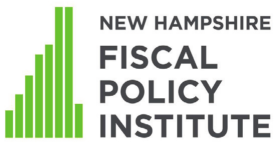NH employers may lower health costs by supporting better health for employees
Diabetes costs the U.S. economy approximately $413 billion annually, including more than $106 billion in lost productivity.
Persistent underinvestment in the early childhood care and education (ECE) workforce hurts not only children and parents but also employers and the broader economy. Recent data shows this problem is not improving — and in some ways, it may be getting worse.
Many ECE professionals do not earn living wages
In 2024, New Hampshire ECE professionals categorized as “child care workers” and preschool teachers earned median annual salaries of $34,570 and $37,500, respectively. These wages may be too low to meet basic living expenses. According to the Massachusetts Institute of Technology’s Living Wage Calculator, a single Granite State adult without children would need to earn $51,552 annually before taxes to support themselves. A single adult with one child would need to earn $93,451, while two working adults with one child would need to earn $104,373. These estimates do not include money set aside for emergency savings, retirement or paying off debt.
New Hampshire’s ECE workforce shrank between 2023 and 2024
Low wages and lack of benefits may contribute to high turnover within the ECE profession and make recruiting new teachers difficult. These challenges may have contributed to the approximately 8% reduction in the number of individuals employed in the New Hampshire ECE workforce between 2023 and 2024, despite the total number of workers living in the Granite State increasing about 1% across those years. The ECE decrease coincided with the end of several onetime COVID-19 federal aid programs, which expired in 2023.
$15m for recruitment and retention of ECE professionals unlikely to be allocated
The new State Budget includes language that would appropriate $15 million in federal Temporary Assistance for Needy Families (TANF) reserve funds for grants to increase ECE workforce recruitment and retention. Based on information from the New Hampshire Department of Health and Human Services, in consultation with the federal government, this purpose is not an allowable use of TANF reserve funds. As such, the $15 million will likely not be allocated to ECE providers.
Although workforce data from 2025 will help determine if the 2024 reduction is a trend, this early data suggests increased funding may have helped stabilize the ECE workforce, and that the end of funding may have contributed to a reduction in the workforce size. Sustained funding could help ensure New Hampshire’s ECE workforce grows to meet the Granite State’s need for child care to support the overall workforce and economy.